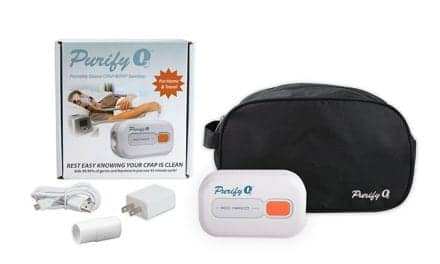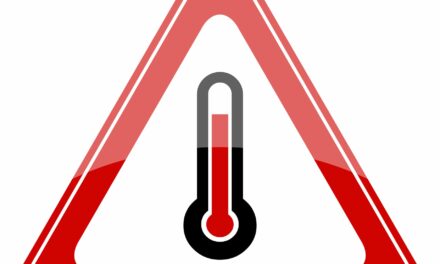Digital solutions—from AI-powered mask fittings to telehealth CPAP adherence services—reshape how four durable medical equipment companies deliver care.
By Alyx Arnett
Durable medical equipment (DME) companies are integrating digital tools to enhance patient satisfaction with sleep therapies.
Companies like Collins Medical Equipment, Aeroflow Health, VGM & Associates, and Apria Healthcare are among those leveraging technologies such as artificial intelligence (AI)-powered mask fittings, telehealth platforms, and e-prescribing to alleviate challenges including staffing shortages and nonadherence with CPAP therapy.
For some, the tech was added to improve existing sleep services, while other DMEs are venturing in as tech-centric newcomers.
Leaders with these four DMEs explain how they’re leaning into digital innovations.
Collins Medical Equipment, Fairfield, Conn

Family-owned Collins Medical Equipment expanded into sleep therapy services last August with the launch of a tech-heavy CPAP program. It developed the program to fill a void in local healthcare offerings.
“The patients were struggling to find a provider to meet their needs as quickly and effectively as they expected. It could take months, we’ve heard, from other providers, so we really wanted to bridge that gap between how quickly they can get started and start with the mask and accurate supplies,” says De’borah Little, director of customer operations at Collins Medical.
To make it happen, Collins Medical leveraged technology through partnerships with three companies—SleepGlad, rtNOW, and Parachute Health—to offer remote mask-fitting technology, telehealth support, and streamlined prescription processes, respectively.
With AI-powered SleepGlad, patients don’t have to come to the office to be fitted for a CPAP mask. Patients receive a text message that opens SleepGlad, take a photo of their face with their smartphone, and SleepGlad analyzes the image to recommend masks. SleepGlad touts a 97% mask-match accuracy rate. According to Andrea Collins, director of marketing and public relations at Collins Medical, this precision diminishes the likelihood of patients requiring refits.
“If you can get the mask right early, the adherence rate and then general success of using a CPAP goes up tremendously, whereas if you have to try lots of different masks, then sometimes they don’t end up being adherent,” Collins says.
Little points out another advantage of SleepGlad: It enables patients to see their mask recommendations. So if a patient is matched with a mask brand they’re unfamiliar with or would prefer a full-face mask versus a nasal pillow, for instance, they can electronically browse alternatives.
After patients are set up with the initial supplies, they can connect with respiratory therapists (RTs) through Collins Medical’s partnership with telehealth provider rtNOW. The RTs not only assist with machine setup, cleaning procedures, and proper usage but also provide ongoing follow-up support, which has helped indicate whether patients are in the right mask or struggling, says Little.
Collins Medical also extended its e-prescribe partnership, offered through Parachute Health, to the CPAP program. It had been using e-prescribe for almost a year for its diabetic and incontinence supplies. “That has really been able to help us get things through quicker and [is] hopefully easier for physicians and medical facilities as well,” says Collins.
VGM & Associates, Waterloo, Iowa

VGM & Associates stepped into the sleep medicine field last June with the launch of its Sleep Services program.
The company, which had primarily put DMEs in touch with vendors that offer services, launched its own service after hearing that the DMEs were struggling with CPAP compliance monitoring, largely due to limited staffing.
“So we wanted to offer a service where we can take over that portion for them,” says John Carter, CRT, RCP, vice president of sleep and respiratory compliance services at VGM & Associates.
Patients are contacted early and often to nix any challenges. Patients are contacted 48 hours after CPAP setup and weekly until the 30-day point, all while VGM & Associates looks at compliance data. Sleep coaches and therapists are available to guide patients through the process.
“Many patients try the first couple of nights and run into issues. If you’re waiting a week or two to make that initial contact with the patient, they may have already given up,” says Carter. “It’s important to not only get in touch with them because they’re having issues but also establish that relationship with a sleep coach who they trust can help with issues they have.”
Since launching the program, VGM & Associates has collaborated with about 12 DME providers and worked with nearly 10,000 patients.
Patient compliance rates have ranged from 78% to 90%, says Carter. “Based on the feedback that we’ve gotten from our DME providers, they’re seeing an increase in compliance. At the end of the day, it’s better for the patients, and it’s better for the DME provider for resupply purposes,” says Carter.
As for the onboarding process, sleep coaching and education are provided, while the setup phase is dedicated to instructing patients on product usage and setting expectations.
“CPAP therapy is different, and it does take some time. We’re just here to help the patients as best we can to get accustomed to the therapy and use it as much as possible to help their overall health,” says Carter.
Looking ahead, Carter anticipates technology, including AI, will take on an increasingly vital and widespread role in proactively identifying patients who may encounter challenges early in their treatment.
Aeroflow Sleep, Arden, NC
Aeroflow Sleep, a provider of CPAP equipment and supplies, has incorporated remote mask-fitting technology into its workflow. According to Michelle Worley, RN, director of clinical operations at Aeroflow Sleep, the addition has helped fit patients with an appropriate mask initially, reducing the number of return clinical visits.
“An ill-fitting mask can result in poor compliance, and patients can give up easily if the mask does not fit correctly,” Worley says.
The technology includes a questionnaire the patient completes on their smartphone. The patient then is prompted to take a picture of themselves to upload to the database, and the algorithm recommends mask choices with sizing based on picture measurements and survey answers.
“This technology allows us to assess the patient’s needs before we meet them, so we are prepared for the patient visit with an idea of what mask the patient may need,” says Worley.
Next, Aeroflow Sleep hopes to work with sleep labs and practices to get them on board using the same technology so those clinicians can also benefit and tie in more closely to their referral source partners.
Apria Healthcare, Indianapolis

Apria Healthcare is utilizing e-prescribe technology to improve order accuracy and compliance, a move aimed at enhancing patient care standards within the DME sector.
Apria has championed e-prescribe for years, relaunching the e-prescribing platform DMEhub in 2018 before it more recently became DMEscripts, a joint venture between Apria, the American Association for Homecare, VGM & Associates, AdaptHealth LLC, Lincare Inc, and Rotech Healthcare Inc.
According to Robert Miller, RPSGT, RST, vice president of sleep business at Apria Healthcare, the primary driver behind adopting e-prescribe was to ensure the transmission of complete information from referring physicians.
The issue with the traditional method of faxing an order to a DME is that it often would not include all of the information required by the payer, says Miller. So if a physician sent an order on a Friday that was incomplete, it wouldn’t be until the next week when the office staff could follow up. “The order is waiting in limbo, and the patient is waiting for their therapy because of this lack of communication,” he says.
E-prescribe has sped the process significantly because the order can’t go through the platform unless it is complete, he says.
The system also enables physicians to generate consecutive orders without the need to retrieve patient information, fax it, and repeat the process for each patient. This streamlined approach not only benefits patients by accelerating the process but also reduces administrative burdens for physicians, resulting in time savings and minimizing the need for follow-ups on previously submitted orders.
It also creates efficiencies for Apria’s staff. “This e-prescribe platform reduces the overall amount of manpower that is required to move a patient quickly through the initial process to get them their needed equipment,” Miller says.
The platform also enables orders to be tracked from submission to delivery, integrates with electronic health records and billing systems, and allows for secure messaging between prescribers and suppliers.
While e-prescribing has picked up in the DME sector, a barrier to adoption has been the proliferation of multiple platforms, requiring physicians to navigate several systems for e-prescribing. That challenge was the impetus behind DMEscripts, which aims to offer a more unified platform for more efficient use.
While integration complexities persist and solving them remains a work in progress, Miller anticipates seeing e-prescribe become more mainstream. “We’ll just see continued integration, adoption, and expansion of e-prescribe going forward,” he says.
Photo caption: VGM & Associates
Photo credit: VGM & Associates




